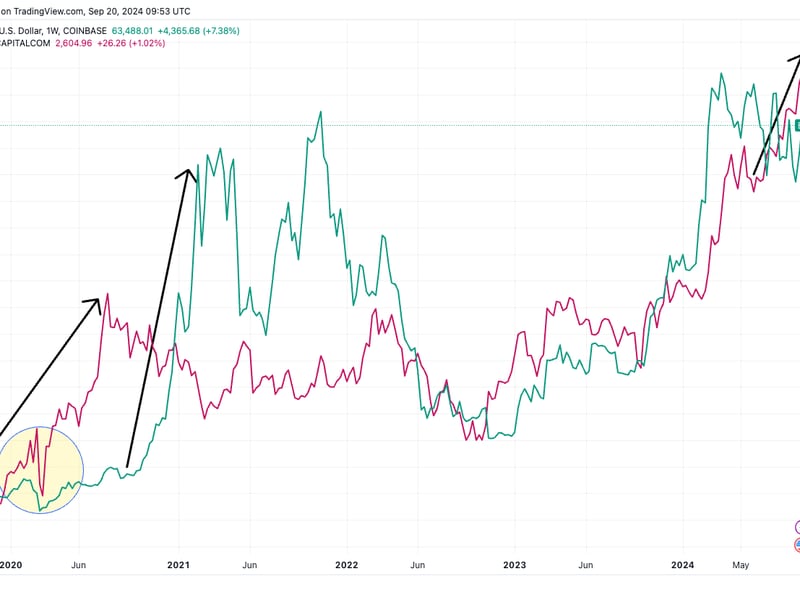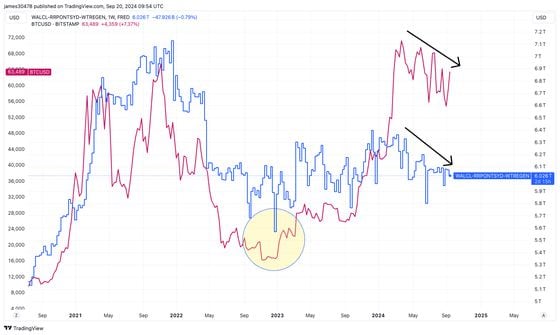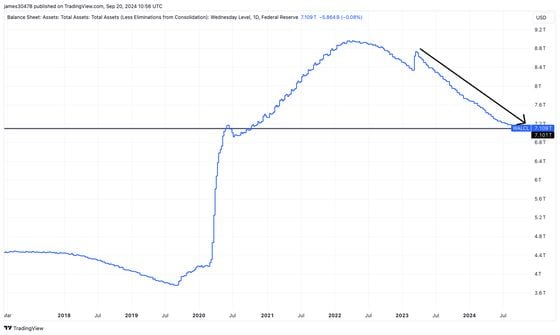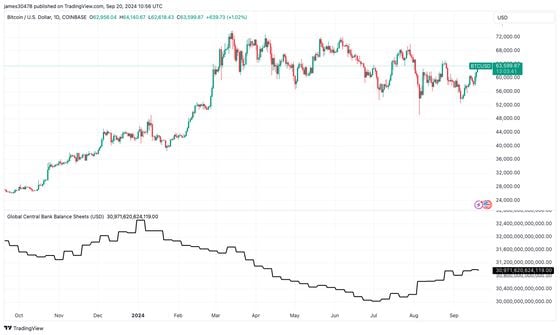
In the past five days, bitcoin (BTC) has surged 7%, breaking through $64,000 for the first time since Aug. 26. Gold, for its part, has reached all-time highs on over 30 occasions this year, topping $2,600 an ounce. These remarkable performances mark the first time since bitcoin's inception in 2009 that both are the top-performing assets of the year, according to Charlie Bilello, the chief market strategist at Creative Planning, an investment management and financial planning firm.
Year-to-date, gold has risen 27%, surpassing its 2020 performance of 25%. The last time it did better was 2007. What is driving this impressive rise?
Gold has historically been seen as a hedge against monetary debasement and global uncertainty, and current economic conditions suggest it is again fulfilling this role. The recent surge in gold prices can be attributed to these factors. Notably, gold began its rally before the significant monetary debasement triggered by the Covid pandemic in 2020, while bitcoin emerged as a star performer in late 2020 and into 2021. With bitcoin now just 14% away from its all-time high, is it playing catch-up once again?
A closer examination reveals that bitcoin's price tends to move in line with the Federal Reserve's net liquidity metric. This measure, calculated by subtracting reverse repo and the Treasury General Account from the Fed's balance sheet, indicates that bitcoin tends to follow liquidity trends.

Both bitcoin and net liquidity bottomed out toward the end of 2022, coinciding with the FTX collapse. Since then, bitcoin has steadily risen alongside an increase in net liquidity, which now exceeds $6 trillion.
The Federal Reserve's balance sheet is currently at $7.1 trillion, and although it is still engaging in quantitative tightening, the pace has slowed. The collapse of Silicon Valley Bank (SVB) in March 2023 led to a $1.6 trillion reduction in the balance sheet, bringing it back to levels seen during the initial phases of quantitative easing in response to the pandemic.

The draining of reverse repo balances, now just over $300 billion, releases liquidity back into the financial system. This is stimulative, increasing the availability of funds for lending, investment, and overall economic activity.
Looking more broadly, the combined balance sheets of the world's 15 largest central banks – including the U.S., European Union, Japan and China – approach $31 trillion.

While this number alone is not the focus, the trend shows a global resurgence in central bank balance sheets from about $30 trillion in July. This increase in liquidity is particularly stimulative for bitcoin, which tends to mirror liquidity trends.
Adding to this, just Wednesday the Fed cut the interest rate by 50 basis points, further supporting the rise of bitcoin and gold.
免责声明:本文章仅代表作者个人观点,不代表本平台的立场和观点。本文章仅供信息分享,不构成对任何人的任何投资建议。用户与作者之间的任何争议,与本平台无关。如网页中刊载的文章或图片涉及侵权,请提供相关的权利证明和身份证明发送邮件到support@aicoin.com,本平台相关工作人员将会进行核查。




